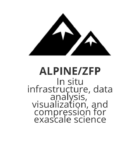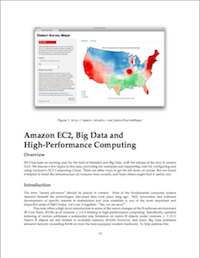With the advent of the exascale supercomputing era, computational scientists can run simulations at higher resolutions, add more detailed physical phenomena, increase the size of the physical problems, and couple multiple codes spanning both physical and temporal scales. These exascale simulations generate ever-increasing amounts of data. The Data and Visualization efforts in the US Department […]
ALPINE/zfp Addresses Analysis, Visualization and Data Reduction Needs for Exascale Science Applications
Podcast: ZFP Project looks to Reduce Memory Footprint and Data Movement on Exascale Systems
In this Let’s Talk Exascale podcast, Peter Lindstrom from Lawrence Livermore National Laboratory describes how the ZFP project will help reduce the memory footrprint and data movement in Exascale systems. “To perfom those computations, we oftentimes need random access to individual array elements,” Lindstrom said. “Doing that, coupled with data compression, is extremely challenging.”





